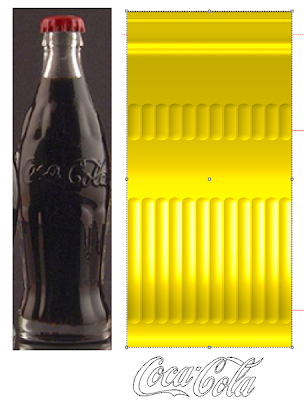Like the files we currently build in EnRoute for our three axis MultiCam, I am discovering there are no end to solutions of how it will be done for the four axis router when we get it next month. The folks at EnRoute are working on the software to do the task. I've seen it done but have yet to try the software for myself. Many of the four axis tasks will build on the capabilities of the current software. In many instances the files can be build as they are now and then the reliefs simply wrapped to form the fourth axis files. A thorough understanding of the current software will give us a leg up on what is to follow.
In the last days I have been searching the net to find out just what folks are doing and how they are doing it. What I have found out is many are using '3D clipart' and simply modifying the files to route in the round. It's not that much different than what is happening in the 3 axis world of routing. But I want to do a whole lot more than that. I want to build anything I can dream up. Even with the very limited things I have thought and dreamed up so far I believe I will be able to use EnRoute to achieve it. And since I managed to do many things that many told me would be difficult or impossible to do on a three axis machine - imagine what will be possible with the four axis being built now.
Last night as I sipped on a Coke and did some sketching It occurred to me how difficult something like a Coke bottle would be with a three axis router. Difficult but not impossible. But with a four axis setup it suddenly became relatively easy. As usual it is as simple as visualizing the various bits and how to eventually combine them for the finished result. Let me take you through the process...
It only took a few seconds to locate a picture of the Coke bottle I wanted. It was the old style with embossed lettering. I did a vector trace in a few seconds more. The Coca Cola logo was also traced and made into a vector in seconds. EnRoute is very good at that task.
Sweep to rails is a task I am only moderately familiar with. I quickly learned that the rails need to be vertical - unless it was some other operator malfunction I was performing. Once I had the rails turned the right way it worked the first time. It looked like a flattened Coke bottle already. This was merged with a zero height relief.
Now it was time to add the flutes. I lined the Coke bottle picture up with the relief and drew two appropriately sized shapes...
These were then duplicated across the bottle. I counted the number of flutes on a real bottle and then sized and spaced then accordingly. I then modified my relief to form very subtle flutes across the bottle.
The lettering was next. Unfortunately I neglected to grab a screen capture of the vectors. I squished them together to deform them horizontally. The thing to remember is that as we wrap around the center axis the thicker part of the bottle will stretch out the surface (by virtue of its distance from the center axis), bringing the lettering back to it's proper shape.
The bottle cap was next. O created a zero height relief and then modified it with the oval shapes. I made then 1" tall and domed steeply. The parts off of the zero height relief were cut off sharply of course.
I checked the side view and saw they needed tapering at the top.
I chose to modify them with a fade bitmap It worked out to be 0.6" that worked to blend them into the top of the bottle cap.
The next shot shows how the blend bitmap affected the ridges of the bottle cap.
I then resized and positioned the file before merging it with the original relief. Except for wrapping it around the center axis the file was complete.
Since I do not yet have the software for that function we will have to wait to see how I did in creating the file... but I am confident that it will work as planned. Stay tuned for the final result.
-dan






















































